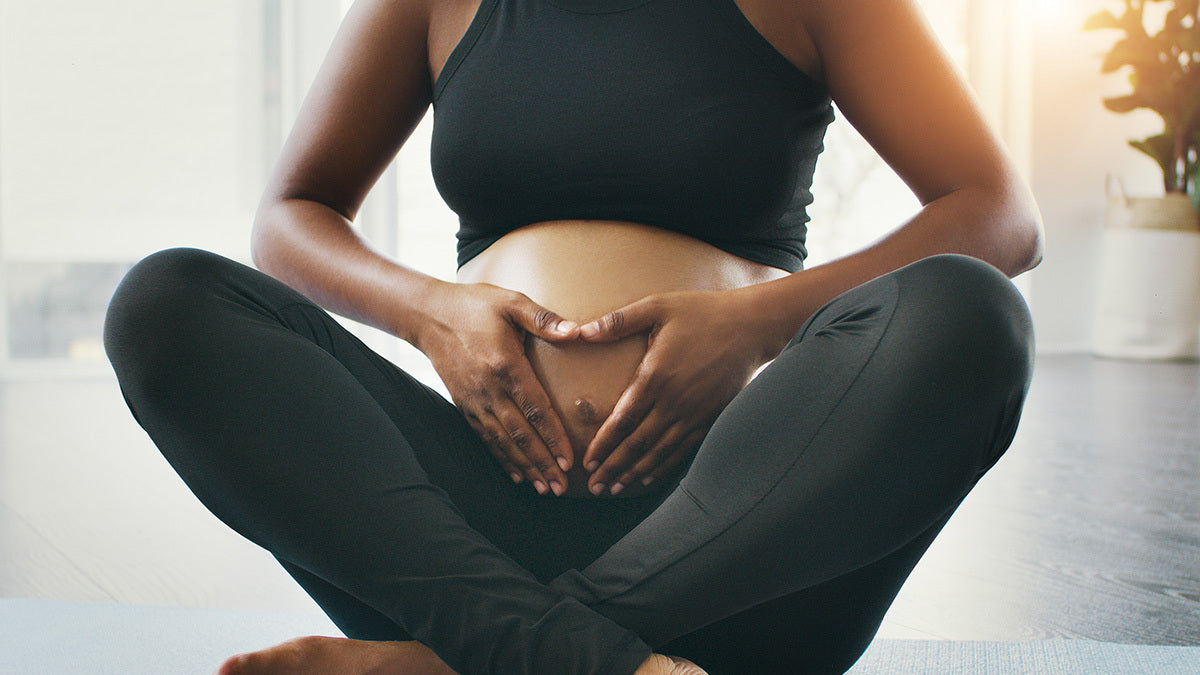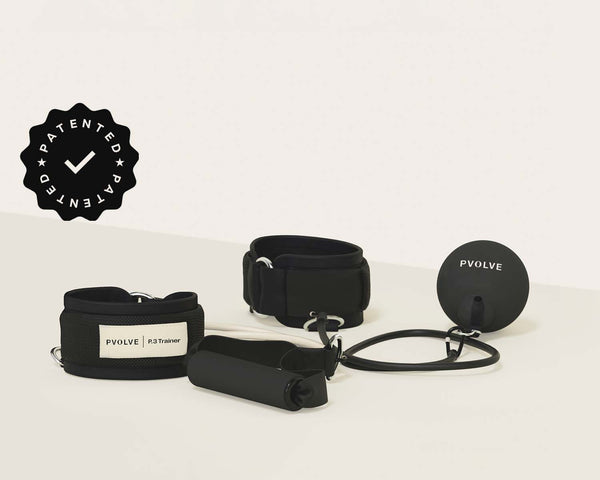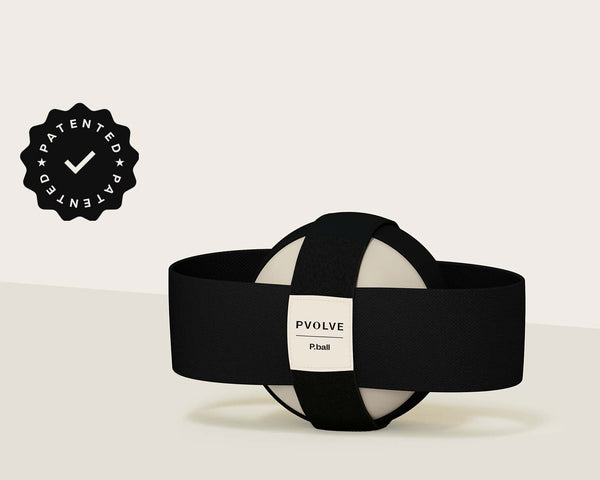We’ve said it before and we’ll say it again: Pvolve is right for just about everyone. Whether you’re a seasoned athlete, a fitness newbie, a bodybuilder, or somewhere in between, there’s surely at least one aspect of the method that can help open your hips, tone your thighs, or show you something you didn’t know about your body.
But what about expecting mothers-to-be? Exercises for pregnant women are often a hot-button topic for two reasons: most of us don’t know if working out with a baby bump is safe, and if it can be, we’re unsure what exactly to do to keep moving in a healthy way during those nine months. And when those nine months are up, how can you safely work that post pregnancy belly?
Dr. Amy Hoover, DPT, Chief Physical Therapist and member of the Clinical Advisory Board is here to answer your questions about exercises during and after pregnancy.
Is Pvolve safe during pregnancy?
Because the Pvolve Method is a low-impact, functional, and mindful exercise program, it’s safe for pregnancy and postpartum as long as you do not have any restrictions from your physician. One of the biggest myths that I hear is that pregnant women should not work their abdominals or core. This is the opposite of the truth! Women need to maintain their abdominal strength to support their changing body and posture. Pvolve focuses on postural alignment, strength training, flexibility, toning and circulation—all things that are crucial focuses for expecting mothers.
Much of the Pvolve equipment focuses on hip and core strength and balance, both of which are excellent options for prenatal workout. Specifically, the P.ball can help with balancing the pelvis when done with correct core activation. Resistance bands are great for building strength, and gliders can help with balance.
The excitement and anticipation during pregnancy is a wonderful time in an expectant mother’s life. With it comes many emotions and significant physical changes that may make it difficult to know what your body needs. Rest assured, exercising throughout pregnancy has many physical benefits, and can aid in labor, delivery and postnatal recovery. And even more so, giving yourself ample time to move throughout the day is necessary to destress. Exercise has even been known to help treat postpartum depression.
Exercise during the first trimester
The first trimester often brings excessive fatigue due to the hormonal changes happening within your body, as well as the hard work your body is doing to grow your baby. You might not feel as energized as usual to exercise, but even 30 minutes of low-impact exercise can help improve blood flow and overall mood. It can also help prepare your body for the rest of your pregnancy by building or maintaining strong hips and abdominals, improving posture and facilitating proper movement patterns. Because of our mindful approach, you’ll be able to adapt to your changing bodies needs and continue to build strength and stability. In particular, this is a great time to begin to focus on posture with the P.band and 2 lb. hand weights so that you’ll be prepared to carry your newborn around with ease when the time comes.
Exercise during the second trimester
The second trimester brings significant changes to your body, including widening of the pelvis and ribcage and of course increased weight in the abdomen as the uterus stretches with your growing baby. These changes (because they happen relatively quickly) can be hard for your muscular system to keep up with. This is the time when common issues can pop up, including lower back, pelvic, rib and sciatic pain. The best way to improve or prevent these issues is by maintaining good strength, flexibility and range of motion in the hips and working on functional core strengthening. Using resistance such as the ankle bands and P.ball will help you keep the muscles in the glutes and hips strong to meet your growing body and even working with the P.3 Trainer will help keep the abdominals strong while still providing room for the baby to grow.
Exercise during the third trimester
The third trimester is the home stretch, and with it comes more physical demand on your body as your baby continues to grow and change. Mobility gets more difficult as our brain wants to make us move how we did before pregnancy, but your body is not physically the same. Mindful exercise can help us map out more effective and efficient movement patterns to reinforce more comfortable movement, posture and positions.
Post-Natal Workouts
The first three months after delivery is becoming more commonly known as the fourth trimester. During this period, your body is recovering from childbirth, adjusting to changing hormones and adapting to the dramatic physical changes that occurred literally overnight.
Postpartum check ups are usually scheduled around 6 weeks after your baby is born, but guidelines are changing and sometimes your physician will see you sooner. You can start doing Pvolve as soon as you are cleared postpartum for exercise by your physician. If you have been doing Pvolve during pregnancy then you should have no problem going right back to it since it’s low impact. However, you may want to modify for the first week or two until you feel stronger.
You can ease back into post-pregnancy exercises with the Post-Natal series with Cecily or try a workout in our Pre/Post-Natal collection is a great place to start. Carving out some time for self care will allow you to be more present in the special moments that come with motherhood.








































